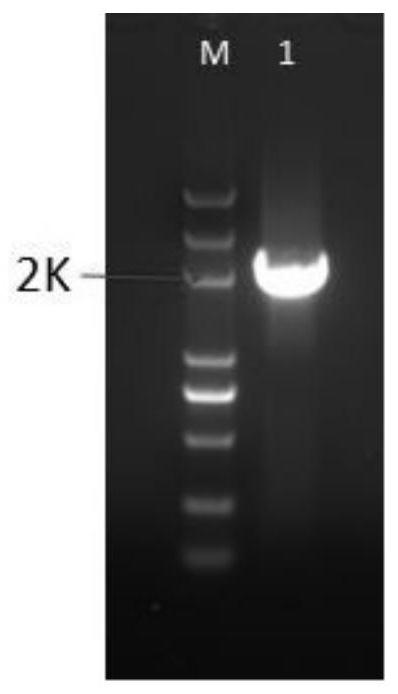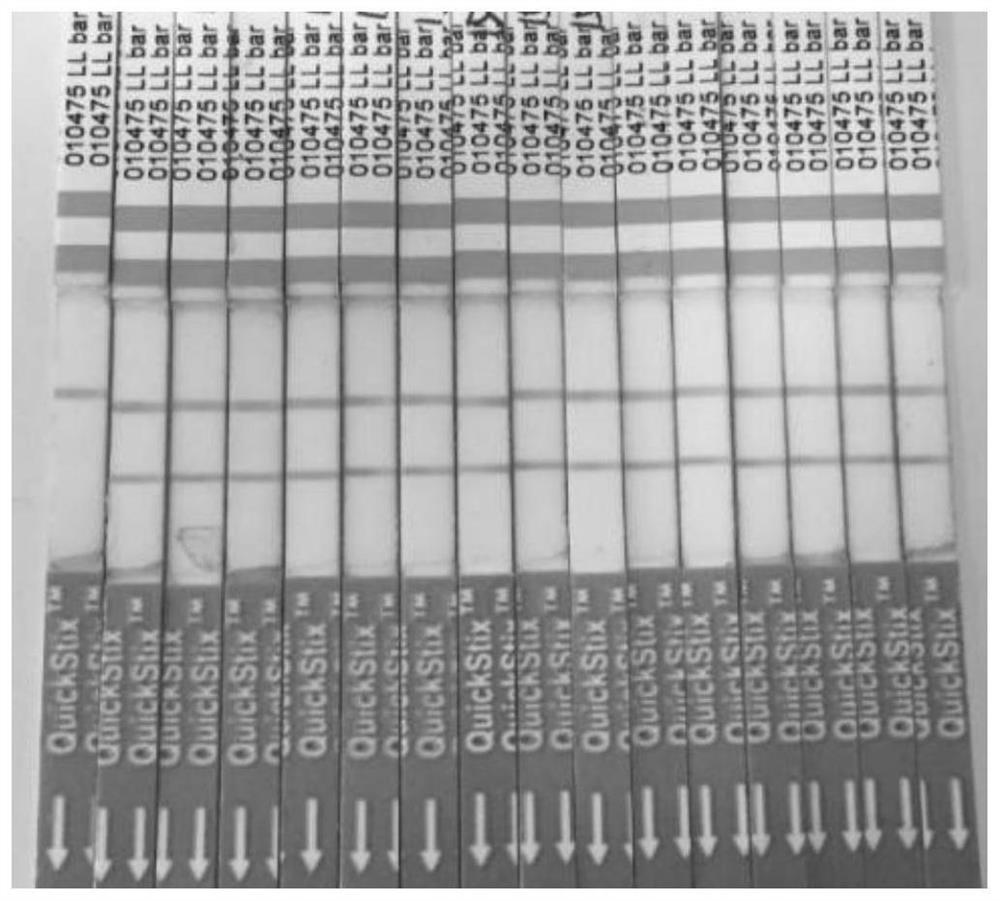Application of Maize bbm1 Gene in Improving Plant Genetic Transformation Efficiency
A technology of genetic transformation efficiency and corn, applied in the application, plant products, genetic engineering and other directions, can solve the problems of low transformation efficiency and genotype limitation, and achieve the effect of improving transformation efficiency, broadening species, and solving genotype limitations of corn transformation.
- Summary
- Abstract
- Description
- Claims
- Application Information
AI Technical Summary
Problems solved by technology
Method used
Image
Examples
Embodiment 1
[0028]Example 1 Cloning of maize ZmBBM1 gene
[0029]According to MaizeGDB (https: / / www.maizegdb.org / ) to predict the gene expression pattern of maize ZmBBM1, extract the shoot apical meristem (SAM), root, 16-20 days post-pollination embryo and endosperm of V3 and V5 respectively RNA, reverse transcribed into cDNA, using cDNA and genomic DNA as templates to amplify the ZmBBM1 gene (figure 1 ), the CDS region of the gene is 2040bp in length. The amplification system is as follows:
[0030]
[0031]The primer sequence is as follows (5′-3′):
[0032]BM-F:AGAACACGGGGGACTCTTGACCATGGCTTCAGCGAACAACTGGCTG
[0033]BM-R: CGATCGGGGAAATTCGAGCTGGTCACCTCACCCCATGCCGTTGTTGAAAG
[0034]The PCR reaction procedure is as follows: 95°C pre-denaturation for 5 minutes; 98°C denaturation for 15s, 60°C annealing for 30s, 68°C extension for 2min30s, 28 cycles; 68°C extension for 10 minutes, 16°C incubation.
[0035]The resulting PCR products were electrophoresed on a 1.5% agarose gel, and the gel was cut to recover the target fr...
Embodiment 2
[0036]Example 2 Construction of p3301-35S-ZmBBM1 vector
[0037]The target BBM1 fragment and pCAMBIA3301 plant expression vector prepared in Example 1 were digested with NcoI and BstEII, and the fragments were recovered using PCR product purification kit (purchased from Tiangen Biochemical Technology Co., Ltd.) according to the instructions. The two fragments were ligated with Infusion enzyme to construct a recombinant plasmid p3301-35S-ZmBBM1(figure 2 ).
[0038]Connection system:
[0039]
[0040]The ligation reaction was carried out at 50°C for 15 minutes.
Embodiment 3
[0041]Example 3 Transformation of recombinant plasmid into Agrobacterium LBA4404
[0042]The steps to transform the recombinant plasmid p3301-35S-ZmBBM1 into Agrobacterium LBA4404 are as follows:
[0043](1) Take 5μL of plasmid and add it to 200μL of Agrobacterium competent cells;
[0044](2) Ice bath for 30 minutes;
[0045](3) Take it out of ice and quickly place it in liquid nitrogen for quick freezing for 5 minutes;
[0046](4) Take it out of liquid nitrogen and incubate in a 37°C water bath for 5 minutes;
[0047](5) Put it on ice for 5 minutes after taking it out;
[0048](6) Add 800μL of blank YEB medium, and restore for 4-5h on a shaker at 28°C at 200rpm;
[0049](7) Centrifuge at 4000rpm for 5min at room temperature;
[0050](8) Discard a portion of the supernatant, and suspend the precipitate with about 200 μL of the supernatant, spread it on a YEB solid culture plate containing the corresponding resistance, and invert it in the dark at 28°C for 36 hours;
[0051](9) Pick a single colony grown on the p...
PUM
 Login to View More
Login to View More Abstract
Description
Claims
Application Information
 Login to View More
Login to View More - R&D
- Intellectual Property
- Life Sciences
- Materials
- Tech Scout
- Unparalleled Data Quality
- Higher Quality Content
- 60% Fewer Hallucinations
Browse by: Latest US Patents, China's latest patents, Technical Efficacy Thesaurus, Application Domain, Technology Topic, Popular Technical Reports.
© 2025 PatSnap. All rights reserved.Legal|Privacy policy|Modern Slavery Act Transparency Statement|Sitemap|About US| Contact US: help@patsnap.com



